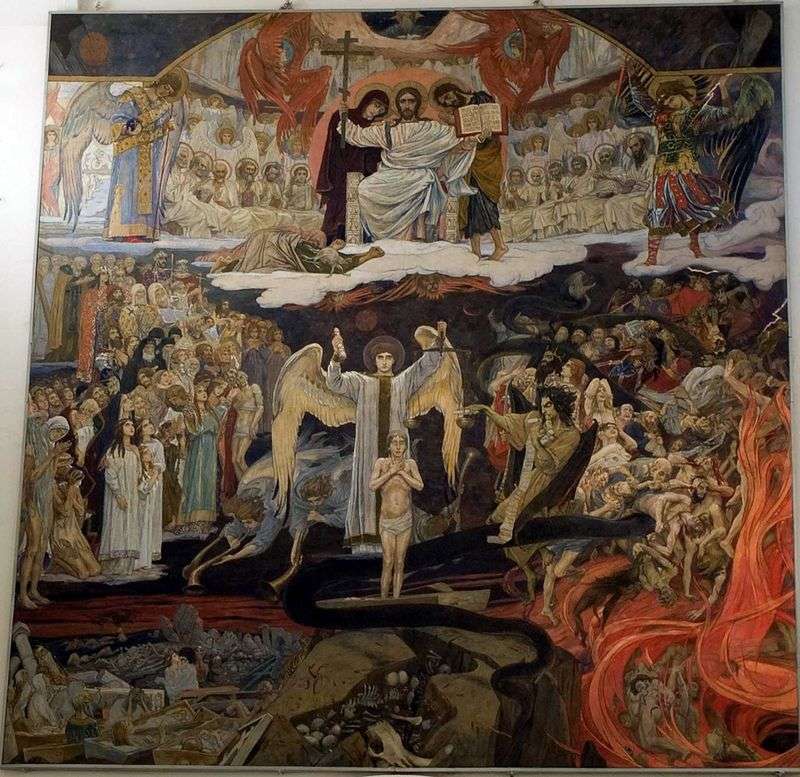
The canvas “The Last Judgment” was created in 1896-1904 among other works for St. George’s Cathedral in the city of Gus-Khrustalny, Vladimir Region, commissioned by the largest breeder and philanthropist Yu. S. Nechayev-Maltsev, who built this cathedral. The artist performed several works on a religious theme, but the “Last Judgment” was to occupy a central place in the cathedral.
The artist made a large number of sketches to the picture, so friends and acquaintances who saw these sketches in Vasnetsov’s studio, showed great interest in the picture beforehand. First, the artist was offered a picture to be exhibited in the Tretyakov Gallery, but this venture was not successful, as the dimensions of the painting were much larger than the size of the room. Nevertheless, such an exhibition was held in February 1904 in the Historical Museum in Moscow. The new work has caused numerous responses in the press, mostly enthusiastic. Later the picture, together with the other, made for the cathedral, was exhibited twice more: in the halls of the Academy of Arts in St. Petersburg and again in the Historical Museum in Moscow.
Finally, in 1910, the paintings were delivered to their destination and fortified on the walls of St. George’s Cathedral, where they found peace for a short while.
And soon after the October Revolution, service in the cathedral was discontinued. In February 1923, the authorities made a decision: “… the empty building of the St. George’s Cathedral is to be handed over to the cultural and educational institution…” On the first Sunday, dances were arranged in the temple building, a brass band was playing… There were debates on the topic: “Is there God?” Later, the cathedral was used as a workshop or as a cinema.
Meanwhile, the paintings were taken to the Vladimir Assumption Cathedral. We exported as it is necessary, without being careful. Moreover, the picture “The Last Judgment” was rolled on a large pole, tearing it down and hastily sewing with string. And before that, it was folded several times and was rubbed on the folds.
In the 80s of the last century it was decided to restore the St. George’s Cathedral again in Gus-Khrustalny, and also to restore Vasnetsov’s picture to its former place.
“The Last Judgment” was in serious condition. Therefore, he was instructed to restore the brigade of Leningrad restorers under the leadership of the largest specialist A. Ya. Kazakov, known for the restoration of the paintings of St. Isaac’s Cathedral, Peterhof and Tsarskoe Selo. Colossal dimensions required a large room, so restored the canvas in the Catherine Palace in Pushkin.
The work carried out by specialists was unique in scope and complexity. A single canvas measuring 700X680 centimeters was punctured more than in 70 places, there were numerous rips of edges, breakthroughs. The canvas was seriously deformed, as a result screes were formed, the paint peels off. A year of hard work. And here the special commission has accepted work with an estimation “perfectly”. In 1983, the painting took its place in St. George’s Cathedral.
The artist embodied in the picture the idea of a free moral choice of man between good and evil. The work was not just an illustration of a religious plot.. Before him, everyone could feel himself in the place of an unknown soul awaiting the sentence of a high court. The people who came to the cathedral had to think and make their “free will” their choice of “ways in life.” Vasnetsov eloquently makes it clear that the scales in the angel’s hand come into effect not only at the time of the Last Judgment. The whole middle part of the picture is perceived as a huge scales, on the bowls of which crowds of righteous and sinners, light and darkness… “The whole history of mankind is the struggle of a beast man with a spiritual person…”, wrote the artist.
Good and evil in the picture is personified in characters from Russian and Christian history. Among the righteous are figures of the Byzantine emperors Constantine and Elena, Princess Olga and Prince Vladimir, Alexander Nevsky and Sergius of Radonezh. Among the sinners are the emperor Nero, the conqueror Batu, the eastern despots and the Roman cardinals… At the same time, many allegory characters have been introduced: Faith, Hope, Love, Sophia, Mercy and others – on the one hand, and on the other – Greed, Drunkenness, Anger it. etc. Texts and inscriptions were actively used.
Religion, history, folklore are complicated here. So, the miser swallows gold coins – he looks like something to the Repin Ivan the Terrible… Among the righteous are depicted an old man with an old woman, as if transferred to the Court from a Russian folk tale, and harlots placed behind the Devil remind the characters of salon painting…
One of the critics wrote many years ago: “The Last Judgment” is a series of symbols, sometimes powerful, sometimes weak, but generally irresistible. This is a terrible oratorio outside of time and space. But this is one of those few truly artistic creations that are worth seeing once to remember forever. “And he was right…
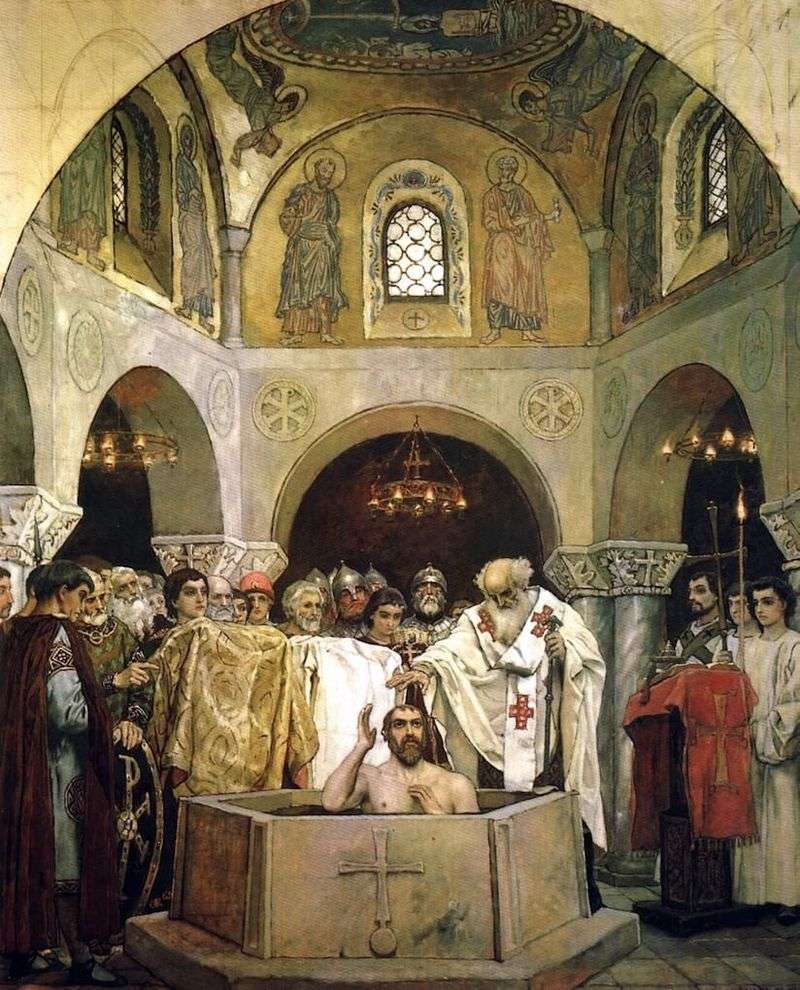 The Baptism of Rus by Victor Vasnetsov
The Baptism of Rus by Victor Vasnetsov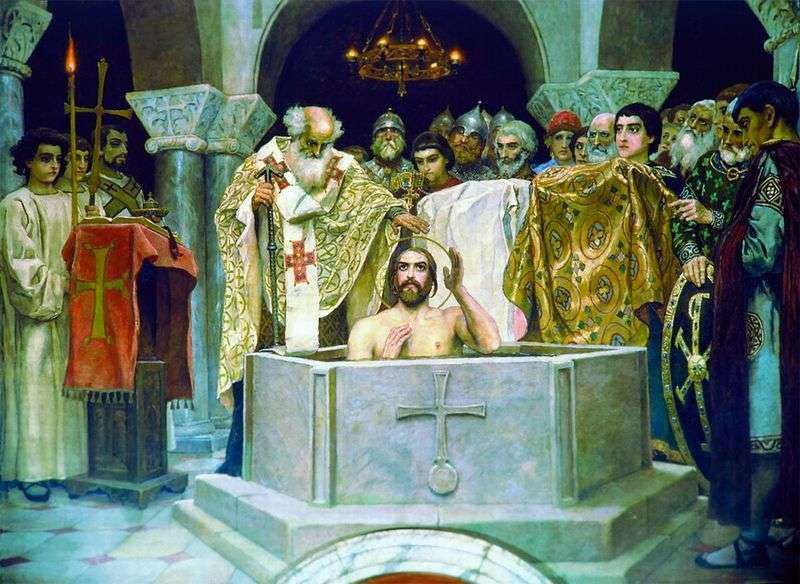 The Baptism of Prince Vladimir by Victor Vasnetsov
The Baptism of Prince Vladimir by Victor Vasnetsov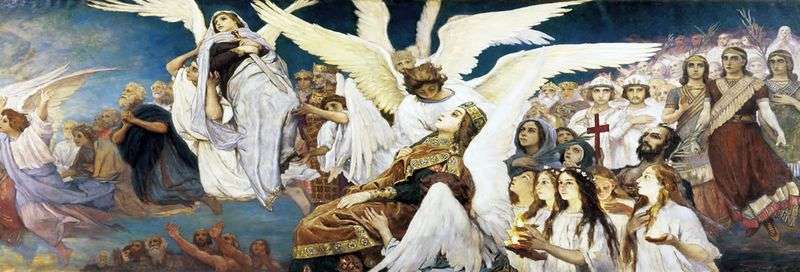 The joy of the righteous in the Lord by Victor Vasnetsov
The joy of the righteous in the Lord by Victor Vasnetsov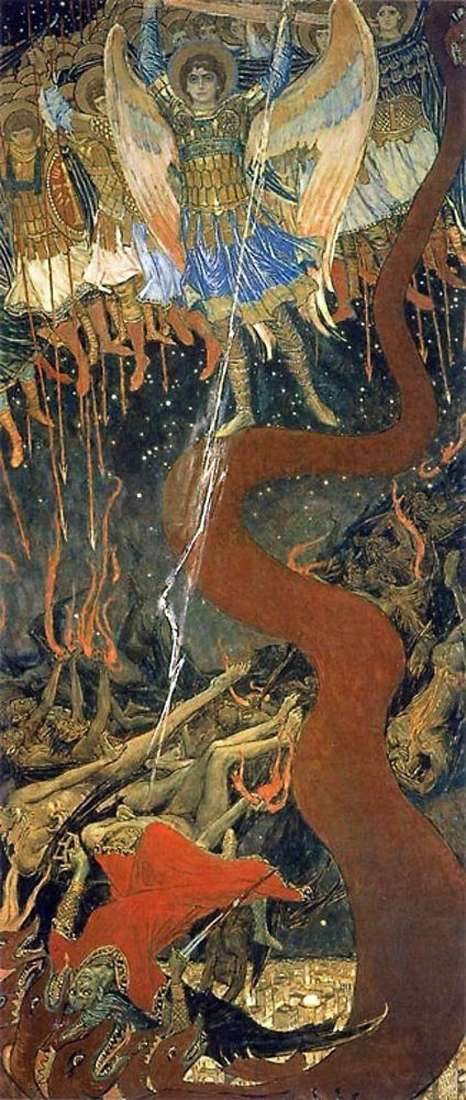 Archangel Michael by Victor Vasnetsov
Archangel Michael by Victor Vasnetsov The Last Judgment by Angelico Fra
The Last Judgment by Angelico Fra Only Begotten Son The Word of God by Victor Vasnetsov
Only Begotten Son The Word of God by Victor Vasnetsov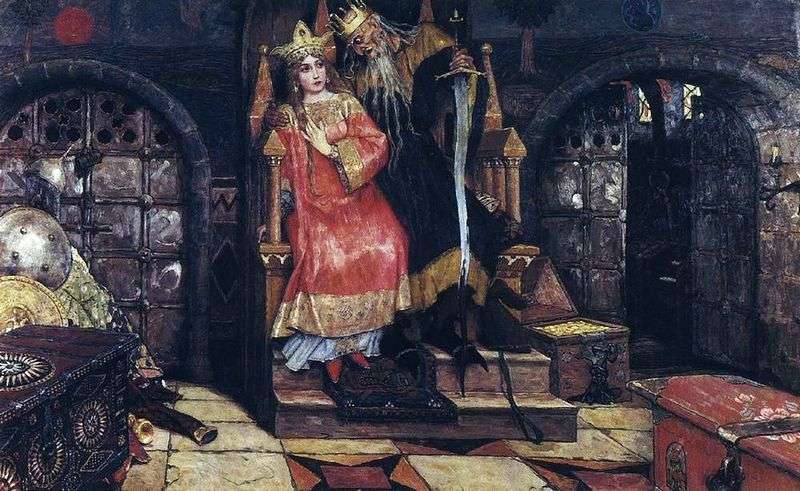 Kashchei the Immortal by Victor Vasnetsov
Kashchei the Immortal by Victor Vasnetsov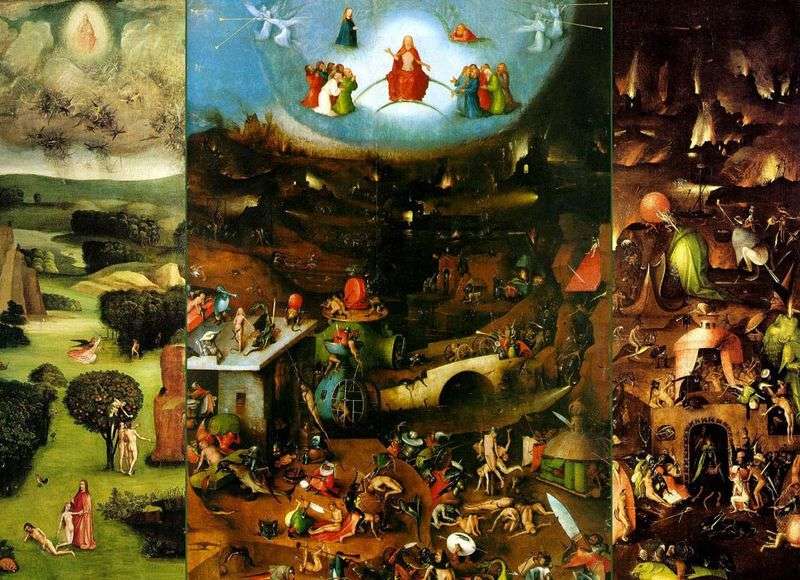 The Last Judgment by Hieronymus Bosch
The Last Judgment by Hieronymus Bosch